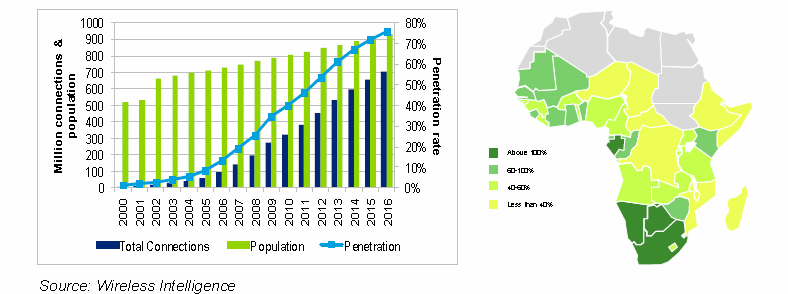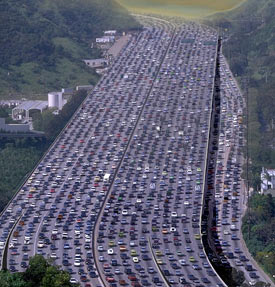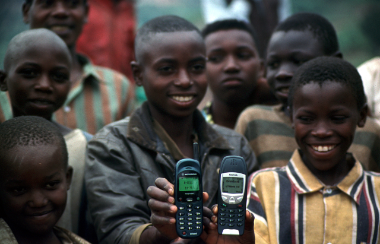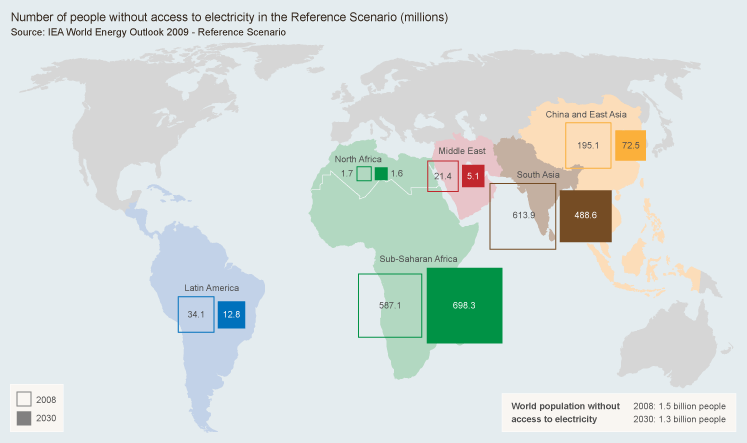Here we are in the last week of 2012 with another 88 years before we see the end of the current century and I am one of those who is hopeful that we have the tools to make the world by then a much better place for all of humanity and the biodiversity that surrounds us. That’s because we are beginning to witness a planet-wide revolution in the use of technology as the fruits of our know how spread even to the most unlikely places and begin to change lives forever.
Here are just a few examples from some recent press clippings:
- Brazil’s rural tribes in Amazonia are taking to DVD players and mobile phones in a big way. In a survey of 32 indigenous villages in the Amazon basin, 37% of households reported owning a DVD player while 36% had mobile phones.
- In Sub-Saharan Africa mobile phone use continues to grow at a rate of 40% per year and is expected to achieve 50% market penetration by 2014.
- In North Africa mobile phone use penetration rates have exceeded 93%. That goes a long way to explaining the “Arab Spring.”
- Of the almost 4 billion people of Asia, more than 1 billion, 27.5% were Internet users as of June 30 and almost 236 million were on Facebook as of September 30.
- Even in Oceania, the island nations of the Pacific, 67.6% of the population were Internet users and 14.6 million were on Facebook.

Of course there remain pockets where 21st century technology has yet to make a significant impression. In Bangladesh, one of the poorest countries on the planet, Internet usage has only reached 5% of the population of its 160 million citizens. And in places like North Korea the 24 million of its people remain isolated from the global conversation.
Another dark side is the propagation of 21st century technology without safeguards. China is the one country where this phenomenon is quite visible. A good example can be seen in the transportation sector where there is a rising demand for automobiles. The Chinese have caught the North American and European bug about cars. Beijing, Guangzhou and Shanghai are the hottest markets and have had to resort to a lottery to allocate vehicle registrations. To service this demand, the country has added 32,000 kilometers (almost 20,000 miles) of new paved highway in the last 5 years, a rate 4 times faster than the speed with which the United States built out its Interstate highway system. The bicycle, once the principal means of transport for so many in China, has receded as automobiles have taken over. Where 60% of trips taken in Beijing back in 1986 were by bicycle, today that number is 17% today. The result for China is 300 traffic fatalities per day, the highest rate in the world, and smog in its urban centres caused by automobile tailpipe emissions.

The 21st Century Electricity Capacity Challenge
Today 1.3 billion of us have no energy security and 2.7 billion lack clean cooking facilities. Electricity consumption in Sub-Saharan Africa, excluding the Republic of South Africa, is about equal to that used by the State of New York. That means 20 million New Yorkers consume the same amount of electricity as 850 million Africans. To deal with this challenge the International Energy Agency estimates we need to invest $48 billion U.S. annually to achieve 100% penetration by 2030. Interestingly, money spent by governments on fossil fuel subsidies is nearly ten times this amount.
What would universal access to electricity mean for the world’s population? Less burning of carbon, not more, as poorer countries move away from cooking fires to cleaner energy sources.
What will it take to get to universal accessibility? Global political will that includes building financial capacity in the Developing World to ensure investment are made in energy projects and in urban and rural infrastructure to deliver energy everywhere.
Mobile phone penetration and Internet growth are leading the way and showing us just how hungry the Developing World is for 21st century technology. If we can duplicate the 21st century revolution happening in communications by making electrical power accessible and ubiquitous we can involve the entire planet in collective progress. Wouldn’t that be a great New Year’s Resolution?











Thanks for a fascinating article! Hopefully technology development will not do much harm to our mother nature. I want to believe that humanity will take care of the nature and will be more cautions at every step taken while advancing technology..